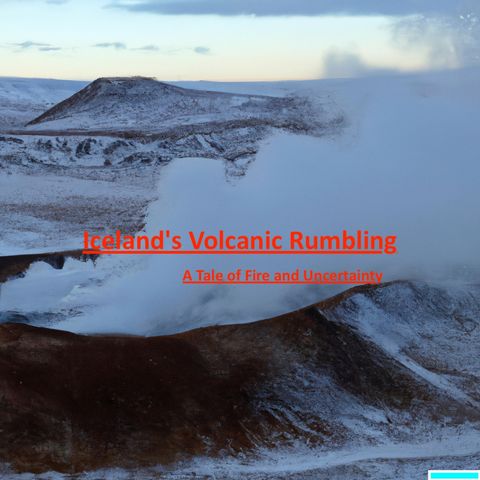16 NOV 2023 · Iceland's Volcanic Unrest: Is it A Cause for Concern? Iceland, a land of fire and ice, is no stranger to volcanic activity. With around 30 active volcanic systems, the country experiences an eruption on average every five years. However, recent volcanic disturbances in the Reykjanes Peninsula, southwest of Iceland's capital, Reykjavík, have raised concerns among locals and tourists alike. Since late March 2021, the Reykjanes Peninsula has experienced a significant increase in seismic activity. Thousands of earthquakes, some reaching magnitudes of 5 or higher, have rattled the region. This heightened seismic activity is attributed to the movement of magma underground, suggesting a potential volcanic eruption. In late November 2023, the Icelandic Meteorological Office (IMO) raised the aviation alert level for the Reykjanes Peninsula to orange, indicating a "significant likelihood" of an eruption. As a precautionary measure, the town of Grindavík, located near the epicenter of the seismic activity, was evacuated. The evacuation order affected around 3,000 residents and temporarily closed the Blue Lagoon, a popular tourist destination. The ongoing volcanic unrest has caused anxiety and uncertainty among locals, who are understandably concerned about the potential impact of an eruption. The evacuation of Grindavík has disrupted lives and businesses, and the ongoing seismic activity has raised concerns about infrastructure damage. For tourists, the situation has led to some cancellations and travel disruptions. However, Iceland's tourism industry is well-prepared for volcanic events, and many tour operators are offering alternative itineraries that avoid the affected areas. As of today, November 16, 2023, the situation in the Reykjanes Peninsula remains uncertain. Seismic activity continues, and the IMO is closely monitoring the situation. While the exact timing and location of an eruption are difficult to predict, authorities are prepared to respond quickly and effectively in the event of an eruption. For locals, it is crucial to stay informed about the latest developments and follow the instructions of emergency response authorities. Having an evacuation plan in place and preparing for potential disruptions is essential. For tourists, it is advisable to check for travel advisories and updates before planning a trip to Iceland. Staying informed about the situation and being flexible with travel plans is recommended. Iceland's volcanic activity is a reminder of the country's dynamic natural environment. While volcanic eruptions can be disruptive and even dangerous, they are also an integral part of Iceland's unique landscape. By understanding the risks and taking necessary precautions, both locals and tourists can continue to enjoy the beauty and wonders of this volcanic island nation. Thanks for listening to Quiet Please. Remember to like and share wherever you get your podcasts.


